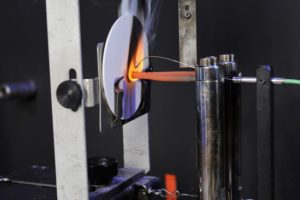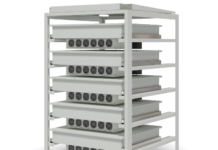
Highlights:
- Non-reinforced PBT with high elongation at break
- PBT compound with high glow-wire resistance
- Laser-weldable polyamide 66
Specialty chemicals company LANXESS is expanding its portfolio of halogen-free, flame-retardant compounds based on polybutylene terephthalate (PBT) and polyamide (PA 6, PA 66). “In terms of properties and processing, our new materials are on par with, or even superior to, their counterparts containing halogen-based flame retardance packages. We believe that sales of these products will benefit in the future from global trends, such as Industry 4.0, electromobility and digitally networked building systems, household devices and consumer electronics,” explains Alexander Radeck, applications developer in the LANXESS High Performance Materials (HPM) business unit.
New additions to the Pocan BFN PBT product line, which previously encompassed materials with 13, 25 and 30 percent glass fiber reinforcement, include Pocan BFN2502, BFN4221 and BFN6410. Pocan BFN2502 is a non-reinforced material that displays a high elongation at break of over seven percent despite its halogen-free flame retardance package. It passes the UL 94 standard fire tests of the U.S. testing organization Underwriters Laboratories, achieving the best classification of V-0 (0.4 millimeters). Another advantage is its high tracking resistance of 600 volts (CTI A, Comparative Tracking Index, IEC 60112). “We see good opportunities for this easy-flow material in components requiring high-level, consistent electrical insulation properties and high dimensional stability,” Radeck adds.
Pocan BFN4221 has a glass fiber content of 20 percent. Like its “sister products”, this compound displays not only high flame retardance attributable to a low tendency toward corrosion in contact with metals, but also good thermal aging resistance and color stability at elevated temperatures, a wide processing window and good suitability for high-contrast laser marking.
Tailored to LED technology
Pocan BFN6410 targets applications in lighting and LED technology. Radeck: “Its light reflection of more than 94 percent at 450 nanometers is unusually high, meaning that when used as a housing material, it reflects LED light almost entirely.” It also offers high blue light resistance and high lightproofness even at thin wall thicknesses. The material further displays good mechanical behavior and a low tendency to warp. It achieves the best classification in UL 94 fire testing of V-0 (0.75 millimeters).
Good results in GWEPT testing
Furthermore, a PBT compound is currently under development that shows outstanding results in glow-wire testing to IEC 60695-2-10. These tests assess the ignition properties and afterburn behavior of plastics that come into contact with overheated or incandescent metal parts. “Our material proves that not only halogen-based, but also halogen-free flame retardance packages can support good glow-wire resistance levels in PBT compounds,” says Radeck. The new material also achieves very good results in the glow-wire testing of end products (GWEPT, Glow-Wire Flammability Test Method for End Products, IEC 60695-2-11). “This test is very demanding because end products, which can have complex geometries and metal inserts, frequently display less favorable behavior than simple test specimens,” Radeck explains. The new material under development also has the potential to pass the stricter glow-wire tests required under IEC 60335-1 for unattended household appliances (“no flame”).
High laser light transmission
One new product among the halogen-free flame-retardant polyamide 66 grades is Durethan AKV30FN04LT. It is optimized for laser transmission welding, a process increasingly used for joining electrical and electronic assemblies because it is associated with only limited thermal loading and is dust-free. In the color black, the material’s light transmission in the standard wavelength range for laser welding is still over 50 percent at a wall thickness of 1.5 millimeters. This ensures a high and rapid delivery of heat input during welding. The joint area melts faster for more cost-effective production. “The polyamide 66 has a flame retardance package whose components display hardly any tendency towards blooming, meaning that virtually no deposits form on the mold surface during injection molding,” Radeck explains. The compound contains the XTS3 heat stabilization system and therefore can be used at higher continuous service temperatures. It passes UL 94 standard fire testing with the best classification of V-0 (0.4 millimeters) and achieves high tracking resistance of 600 volts in tests to IEC 60112. One of its potential applications is safety switches.


















